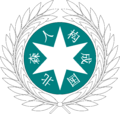Beisinese Constituent State: Difference between revisions
mNo edit summary |
mNo edit summary |
||
| (2 intermediate revisions by the same user not shown) | |||
| Line 71: | Line 71: | ||
Historically, the land that now comprises the Beisinese Constituent State was most contacted by outside settlers, first from Chengsheng and later playing host to early [[Riamo|Riamese]] colonial endeavours. Chengshengese settlement was so successful that this ethnic group comprises an absolute majority of the state's ethnic makeup, with only very few townships in the north and west of the state having any other ethnic majority. After colonial rule concluded and Naikang became independent, the Beisin region underwent the least fighting in the subsequent [[Naikangese Civil War|civil war]], with support for the centralised [[State of Naikang]] very high in the Chengshengese-majority regions, and support for the rebel [[Naikanghi Ashang|Ashang]] was low. In the [[Bano Peace Conference]], the decision to divide the country up into four states and one [[Tachusi Federal Province|Federal Province]] was made, and as a result, the Beisinese Constituent State was founded. | Historically, the land that now comprises the Beisinese Constituent State was most contacted by outside settlers, first from Chengsheng and later playing host to early [[Riamo|Riamese]] colonial endeavours. Chengshengese settlement was so successful that this ethnic group comprises an absolute majority of the state's ethnic makeup, with only very few townships in the north and west of the state having any other ethnic majority. After colonial rule concluded and Naikang became independent, the Beisin region underwent the least fighting in the subsequent [[Naikangese Civil War|civil war]], with support for the centralised [[State of Naikang]] very high in the Chengshengese-majority regions, and support for the rebel [[Naikanghi Ashang|Ashang]] was low. In the [[Bano Peace Conference]], the decision to divide the country up into four states and one [[Tachusi Federal Province|Federal Province]] was made, and as a result, the Beisinese Constituent State was founded. | ||
{{Template:Naikang topics}} | |||
[[Category:Administrative divisions of Naikang]] | [[Category:Administrative divisions of Naikang]] | ||
[[Category:Beisin]] | [[Category:Beisin]] | ||
[[Category:Anteria]] | [[Category:Anteria]] | ||
Latest revision as of 03:19, 2 October 2023
Beisinese Constituent State
北森人构成国 Be̤qsènlen Ge̤useng Gue̤q | |
|---|---|
| Anthem: "Majestic North" (unofficial) | |
| Country | Naikang |
| Capital | Dengshi |
| Government | |
| • Body | Constituent State Parliament |
| • Chief Minister | Gha Cigha |
| • Senate seats | 86 (of 261) |
| • Assembly seats | 159 (of 500) |
| Population (2022) | |
| • Total | 6,787,248 · 1st |
| Time zone | UTC+1 |
The Beisinese Constituent State (北森人构成国 - Chengshengese: Be̤qsènlen Ge̤useng Gue̤q Naichinese: Beîsénhí Go̤qhé̤ng Ge̤) is one of four constituent states of Naikang. The state is named for the dominant Beisin Chengshenese people, who make up an absolute majority of the state's population. The constituent state's capital and largest city is Dengshi. The state lies mainly along the Kouma coast, as well as in more northerly lowland regions and some of the forested windward slopes of the Deshan mountains. The state's population is highly urbanised, and are concentrated into many settlements that dot the state's land area. The Beisinese Constituent State has land borders with each of the other constituent states of Naikang, as well as possessing an international border with Chengsheng to the south.
Historically, the land that now comprises the Beisinese Constituent State was most contacted by outside settlers, first from Chengsheng and later playing host to early Riamese colonial endeavours. Chengshengese settlement was so successful that this ethnic group comprises an absolute majority of the state's ethnic makeup, with only very few townships in the north and west of the state having any other ethnic majority. After colonial rule concluded and Naikang became independent, the Beisin region underwent the least fighting in the subsequent civil war, with support for the centralised State of Naikang very high in the Chengshengese-majority regions, and support for the rebel Ashang was low. In the Bano Peace Conference, the decision to divide the country up into four states and one Federal Province was made, and as a result, the Beisinese Constituent State was founded.

